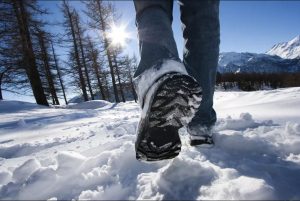Being physically active is a big part of a healthy lifestyle and leads to an improved quality of life. As temperature drops and we pull on our cozy sweaters, our motivation to stay active also declines. We somehow hibernate during winter turning on “bear mode.” Main difference (aside from humans aren’t bears) is that when bears hibernate, they don’t need to eat or drink, and rarely use the bathroom. Since there is little food available for the bear, they nap for months. If there’s food all year round, they won’t hibernate. As humans, who have access to food, are awake and don’t give birth to cubs during this time, why do we stop being active?
Physical environmental factors make it easier or harder to participate in physical activity. When there is access to facilities and parks, for example, we tend to be active. However, adverse weather conditions such as extreme temperatures, hours of daylight, snow, rain, and wind have been identified has major barriers. The Canadian Community Health Survey has shown that 49% of us (almost half, or 5 out of 10 people) are not active in summer, but it goes up to 64% (more than 6 out of 10 people) are not active in winter. This pattern is likely because of long hours of darkness and adverse weather conditions in the winter.
It is important to understand the effects of weather conditions on physical activity before setting your activity goals. We can work on reducing decreases in activity levels during adverse weather by choosing suitable activities that allow us to remain physically active throughout the year. Colder, winter weather doesn’t mean you have to decrease your level of physical activity.
The Canadian physical activity guidelines recommend at least 150 minutes of moderate- to vigorous- intensity aerobic physical activity per week, in chunks of 10 minutes or more. This means activities that move your big muscles and get your heart rate up. In addition, at least 2 days of the week should be dedicated to muscle and bone strengthening activities. Here are some tips to get you started:
- Grab some family or friends who have similar goals as you. This helps both of your motivations to partake in activities. Plus, you are accountable to someone.
- Adopt and enjoy new ways to be active. Take up cross-country skiing or snowshoeing for instance.
- Remember how to act like a kid: build a snowman, make tracks in fresh snow in a maze and follow the trail, build a snow fort, shovel snow, throw snowballs (at a target, at a tree stump or just throw them in a field as far as you can).
- Perform at-home workouts. These can be completed all year around and you don’t need a home gym to do so. Find simple videos online or use resistance bands or even water bottles as weights.
- Dress for the weather and hydrate. This one is self-explanatory.
- If conditions are icy, take extra care, choose well plowed sidewalks and trails or be active indoors.
Participation in physical activity is challenging enough, I get it. I also understand there are multiple factors behind inactivity aside from weather. I’ll be the first to admit, when winter blows in, I much rather pull my blanket over my head and go back to sleep. Why? Because it’s easy, it’s comfy, and its warm. There I said it! Sometimes I agree these can be valid reasons to not be active, especially when it’s -30°C (I’m more of +30°C person). However, my excuses lead down a path of inactivity which is not beneficial to my physical, mental, emotional, and spiritual health. This is what I remind myself.
Although moderate activity (i.e. brisk walking) is safe for most people, before starting any exercise routine, consult your primary care provider to assess your fitness level. As you begin your fitness program, remember Rome wasn’t built in a day and you won’t be fit with one walk. Start slow and build up gradually. Let’s leave hibernation to the bears.

